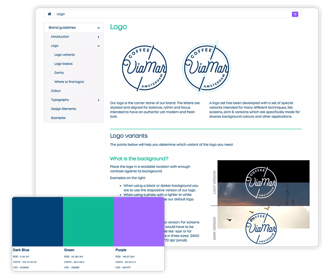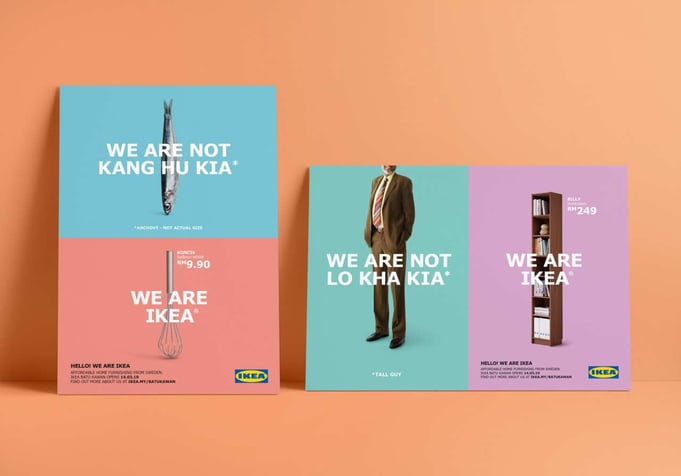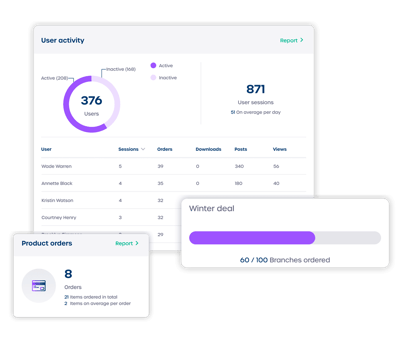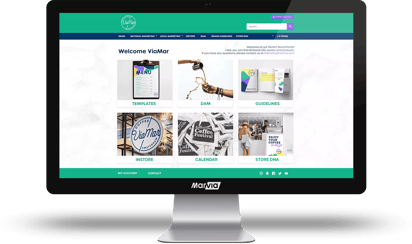
The challenges of distributed marketing
Last updated: October 7, 2025
Distributed marketing is a model where organizations formulate marketing messages at the corporate level and distribute them locally through partners, dealers, or retailers. Local partners then customize these marketing assets to fit their locality and target customers while staying on brand.
Distributed marketing is common to franchises, companies with multiple regional locations, and businesses that partner with field sales agents and retailers to market products and services. This marketing model allows brands to meet customers at a personal and local level. When done right, distributed marketing can promote brand consistency across all locations and rally for more engagement from customers.
However, distributed marketing comes with its own set of challenges. A significant downside to distributed marketing is the misalignment and fragmentation of marketing activities. This can be attributed to the many parties involved and the lack of a clear marketing strategy to ensure cohesiveness. But that's not the only issue.
What are the unique challenges of distributed marketing?
As you'll see below, distributed marketing faces a couple of challenges.
1. Off-brand marketing materials
Where multiple locations are involved, there will be occasional brand non-compliance issues. For instance, local units may use the wrong color for the logo, typography, or tone of voice. While most of these are seemingly inconsequential, off-brand marketing materials can cause mixed messages causing your brand identity to dilute. 
Brands can centralize their guidelines in a brand portal. Unlike brand books or PDFs, a portal is interactive, easy to access, and easily updated. Here, everything that makes up your brand identity can be stored, from assets to the precise color codes in your logo.
2. Inability to adapt to the local market
Suppose corporate marketers decide to use the same campaign in all regions. In that case, local franchises may miss out on personalized campaigns for their target audience. Just because a particular campaign template worked for a store in Dallas doesn't mean it will work for a store in New York. While consistency is important for brands, corporate marketers need to leave room to adapt marketing to each locality.
→ Check out these 15 examples of great localized marketing campaigns
The best strategy would be to combine a healthy mix of national and local campaigns. By doing so, local partners can benefit from the corporate brand authority in national campaigns and still have the means to reach local customers through local campaigns.
 Example of localization creative Ikea (source).
Example of localization creative Ikea (source).
3. Outdated brand assets
Most local marketers don't spend time looking through files to locate designated templates or media for a particular campaign. Here is where brand compliance and inconsistency issues start. Outdated marketing assets and expired media will quickly make their way into your local campaigns. This may lead to legal issues with contracted photographers and vendors.
Brand managers can quickly solve this by investing in DAM software to ensure everyone uses up-to-date assets. They can take it up a notch by training local partners on the expected best practices and compliances around asset use.
4. Slow localization process
Another major challenge of distributed marketing is the long and often slow process of localization. Without a clear communication strategy, changes and updates to campaigns may take longer than necessary to reach local channels. If this happens often, local campaigns will not always match the marketing strategy at the national level.

Also, if the campaign approval process is long, local marketers may take campaigns into their own hands, leading to marketing flops coupled with brand inconsistencies. To counteract this, ensure campaign changes are communicated in time and approval workflows are quick and efficient.
Setting up an automated work approval process will reign in the possibility of local branches straying from brand guidelines. Finally, brand managers can distribute locked templates that promote consistency but leave room for local units to customize as per their needs.
5. Going rogue
Sometimes, local marketers take creativity and customization a bit too far. When this happens and there's no compliance monitoring in place, rogue content can lead to a full-blown crisis. Rogue marketing causes digital detritus- a situation where there's a stream of fragmented digital litter that doesn't add value to growing your brand. This situation can paint your brand as sloppy and untrustworthy in customers' eyes. Mainly, the digital residue is caused by reactive marketing activities as opposed to a clear marketing strategy.
To prevent local branches from going rogue, brands should implement a brand compliance monitoring process. Where possible, they should have a team to monitor compliance while supporting local branches to align marketing strategy with corporate goals. That said, corporate marketers should communicate marketing processes that aren't subjected to compliance. This will give local branches the freedom to be agile and creative with marketing without crossing boundaries.
6. Local-level analytics
 For corporate marketers, accessing insights into local branches' marketing activities can be cumbersome. But without these insights, the brand misses out on the chance to optimize its whole marketing strategy. They are blindsided by the progress and ROI of local marketing campaigns. This happens when there's poor support and communication between corporate and local branches.
For corporate marketers, accessing insights into local branches' marketing activities can be cumbersome. But without these insights, the brand misses out on the chance to optimize its whole marketing strategy. They are blindsided by the progress and ROI of local marketing campaigns. This happens when there's poor support and communication between corporate and local branches.
Corporate marketers can solve this by implementing a centralized brand portal from which all marketing campaigns are distributed. It enables them to track the usage of marketing assets across all regions and helps corporate markets gain insight into the performance of local campaigns. The HQ can devise ways to support local campaigns or optimize campaigns for impactful ROI with this information.
How to offer local partners the flexibility to engage their communities without diluting the brand identity?
Simply put, you can offer flexibility to your local partners and still stay on brand with a Local Marketing Platform. Marvia helps your multi-location businesses create on-brand and localized content at scale.

We offer tools and tactics that help large organizations ensure brand consistency while still empowering local marketers to self-create customized, on-brand assets for all channels.
Local marketers can access pre-approved templates that guide them through the creation process while offering the freedom to customize per locality. At the corporate level, brand managers can track asset usage of each locality, improving the brand compliance monitoring process. Brands can also reduce confusion by granting local partners access to only the content they require.
Learn more about our brand solutions or contact us to understand how Marvia can help your organization stay on-brand.
Is distributed marketing causing inconsistencies in your messaging? See how Marvia can create cohesion – schedule a demo to get the alignment you need.